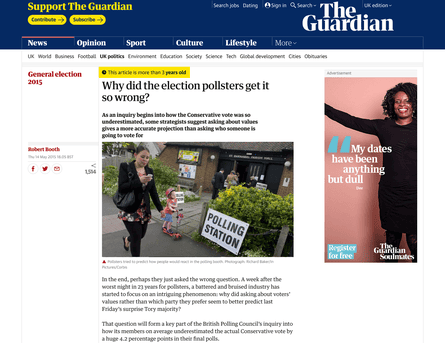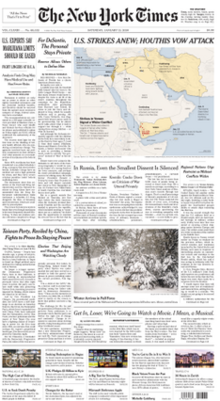What Does News Articles Do?
What Does News Articles Do?
Blog Article
News Articles Things To Know Before You Buy
Table of ContentsFacts About News Articles RevealedSome Known Questions About News Articles.Some Known Facts About News Articles.Not known Facts About News ArticlesUnknown Facts About News Articles
Good expertise of various subjects offers pupils an affordable edge over their peers. Even though digital and social networks are readily accessible, we should not forget exactly how essential it is to review the newspapers. Parents have to attempt and inculcate the routine of reviewing a paper as a day-to-day regimen to proceed the tradition of the adored print tool.Newspaper article also consist of at the very least among the complying with important characteristics about the desired target market: proximity, prominence, timeliness, human interest, strangeness, or effect. The associated term journalese is occasionally made use of, generally pejoratively, to refer to news-style writing. An additional is headlinese. Papers usually follow an expository writing style.
Within these limitations, information stories additionally intend to be thorough. Amongst the larger and much more highly regarded newspapers, fairness and equilibrium is a major element in providing info.
Papers with an international target market, for instance, tend to use a more official design of writing. The specific selections made by a news electrical outlet's editor or content board are commonly gathered in a style guide; usual design guides include the and the US News Design Book. The primary goals of news writing can be summarized by the ABCs of journalism: precision, brevity, and quality.
News Articles Things To Know Before You Buy
Generally, reporters will certainly not make use of a lengthy word when a brief one will do. They utilize subject-verb-object construction and dazzling, active prose (see Grammar). They use narratives, instances and allegories, and they hardly ever rely on generalizations or abstract ideas. News authors try to avoid utilizing the exact same word greater than as soon as in a paragraph (in some cases called an "echo" or "word mirror").
Headings sometimes omit the subject (e.g., "Jumps From Boat, Catches in Wheel") or verb (e.g., "Cat woman fortunate"). A subhead (likewise subhed, sub-headline, subheading, subtitle, deck or dek) can be either a secondary title under the main heading, or the heading of a subsection of the write-up. It is a heading that precedes the primary text, or a team of paragraphs of the primary text.

of a write-up topic, source, or interviewee), it is described as a drawn quote or draw quote. Additional billboards of any of these types may show up later on in the article (specifically on succeeding web pages) to entice further reading. Journalistic internet sites in some cases make use of computer animation techniques to swap one billboard for one more (e.g.
The Single Strategy To Use For News Articles
Such billboards are also made use of as reminders to the post in various other areas of the magazine or website, or as advertisements for the piece in other publication or sites. Press launch of the Swiss government. Normal framework with title, lead paragraph (recap in bold), various other paragraphs (details) and contact details.

Example of a hard-lead paragraph NASA is proposing another room job. The budget plan requests roughly $10 billion more for the job.
An "off-lead" is the 2nd most vital front page information of the day. To "bury the lead" is to start the short article with history details or information of second significance to the viewers, requiring them to review more deeply right into a write-up than they must have to in order to discover the essential factors.
The Main Principles Of News Articles
Usual usage is that a person or more sentences each form their very own paragraph. Journalists usually next page explain the company or structure of an information story as an inverted pyramid. The necessary and most fascinating aspects of a tale are placed at the start, with sustaining details adhering to in order of decreasing value.
It permits individuals to discover a subject to just the deepness that their inquisitiveness takes them, and without the charge of information or subtleties that they can take into consideration irrelevant, but still making that information available to much more interested readers. The inverted pyramid structure also enables short articles to be trimmed to any kind of approximate size during design, to suit the area readily available.
Some writers begin their tales with the "1-2-3 lead", yet there are lots of kinds of lead offered. A twist can refer to numerous points: The last tale in the information program; a "delighted" story to end the program.
Longer posts, such as magazine cover posts and the pieces that lead the inside areas of a paper, are known as. Attribute tales vary from straight information in numerous ways.
Top Guidelines Of News Articles
An attribute's initial paragraphs often relate an interesting moment or occasion, as in an "anecdotal lead". From the particulars of a person or episode, its sight promptly see this site widens to generalizations concerning the tale's subject.
The Editor's Toolbox: A Recommendation Guide for Beginners and Professionals (2001) Allan M. Siegal and William G. Connolly. The New York City Times Handbook of Design and Usage: The Official Style Overview Used by the Writers and Editors of the Globe's Most Authoritative Paper (2002) M. L. Stein, Susan Paterno, and R.
Report this page